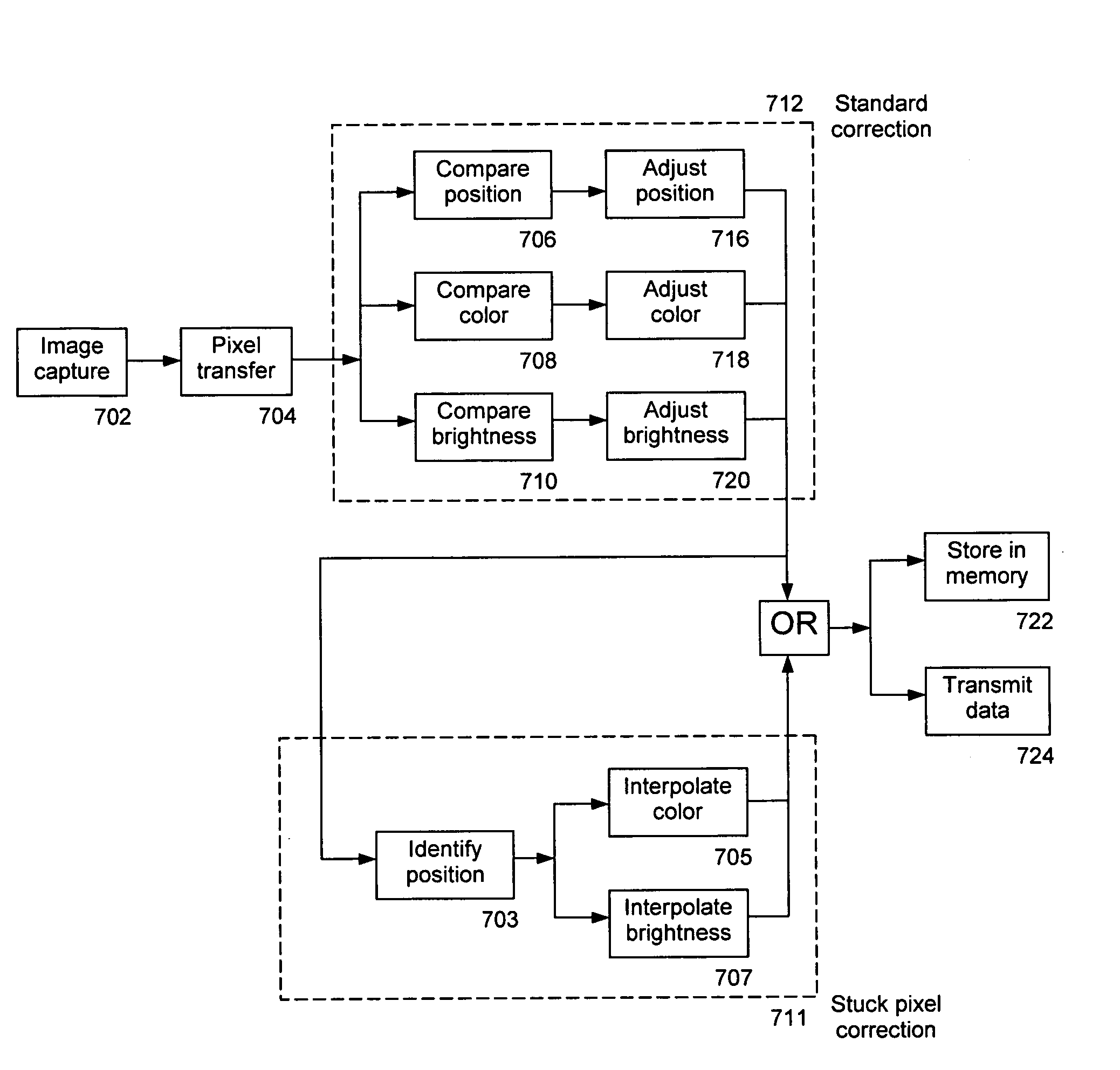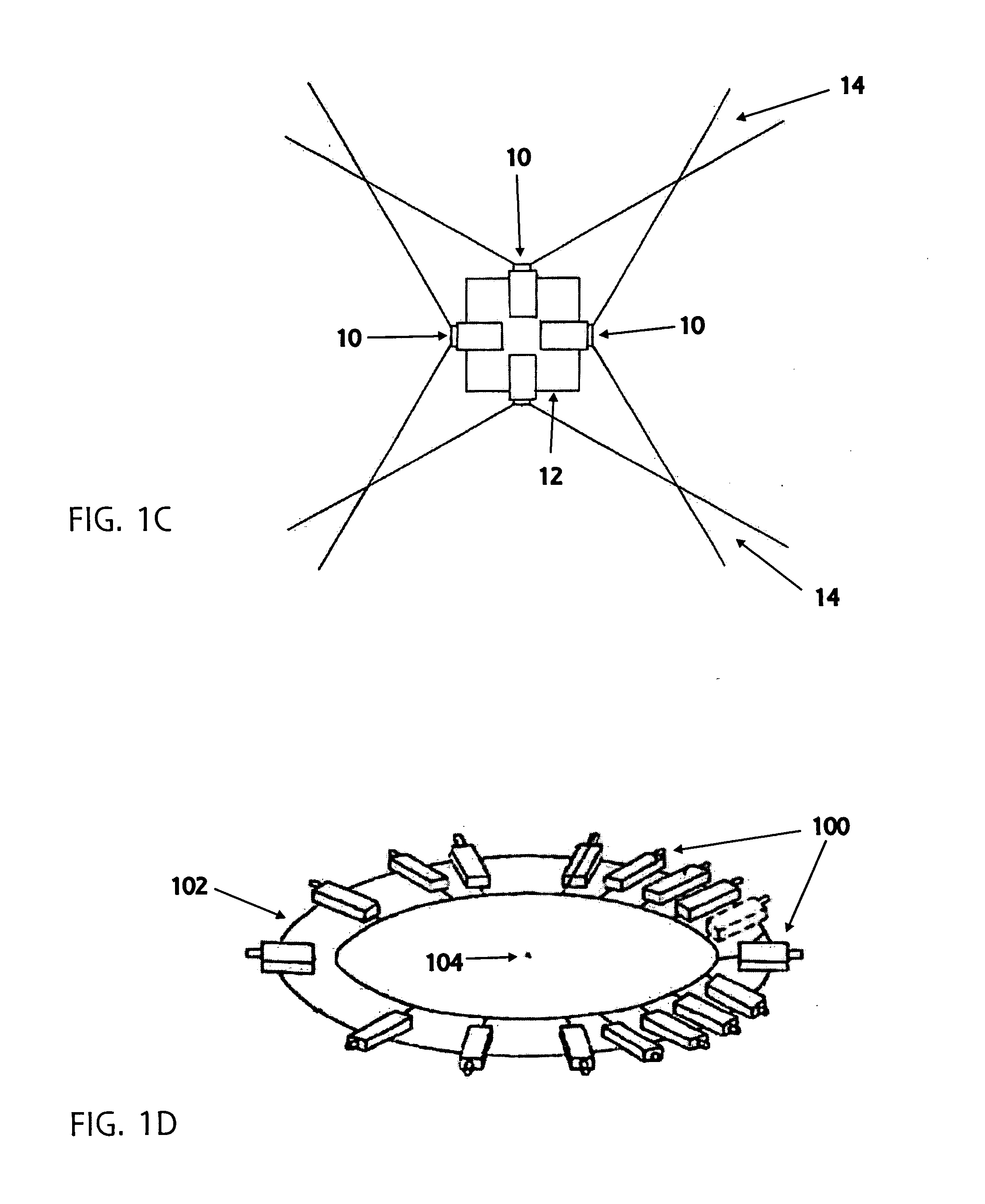Mass-produced
consumer cameras of the early-to-mid-1900's were not practical for taking stereo photographs because re-positioning for the second view of a scene requires significant handling to yield satisfactory results.
Similar radial arrangements of multiple cameras can provide limited
stereo image acquisition, but only in
peripheral areas of lens coverage where adjacent images overlap.
However, imaging devices are intentionally not paired nor are they mounted exclusively at normal interocular separation distances.
Thus, there is not a demonstrated design intention to avoid hyperstereo effects for any panoramic stereo images they may capture.
This design further risks hyperstereo effects by not
pairing imagers at normal interocular separation distances.
The problem with this design is both hyperstereo effects and visual interference by the mirrors in the viewing space of adjoining imagers.
Rogina uses epipolar techniques to synthesize the two stereoscopic views rather than using two directly-captured images, limiting real-time performance in
stereoscopy.
One obvious drawback is the interference of the physical mirrors in the fields-of-view of adjoining imagers.
Further, the construction of the mosaics takes additional
processing with the concomitant expenses of hardware and
software, as well as time.
However, stereo coverage is not necessarily complete nor are imagers appropriately spaced to simulate normal eye-separation distances.
Both Pierce's and McCutchen's cameras share the limitation that the various images when viewed as pairs are of necessity at a variety of angles and elevations.
As such, they are therefore not practical for producing normal panoramas in
stereoscopy.
All of the afore-mentioned imaging arts suffer from impractical production of stereo images across a wide
panorama.
Further complex
processing is needed in all cases to adjust for rectilinearity and interocular spacing effects to construct
usable stereo images around the horizontal viewing plane.
Most multi-imager cameras also suffer in keeping imagers aligned with respect to each other.
A failure in calibration retention makes these prior arts impractical for use on a day-to-day basis.
As a
single plate, Barman's approach works well for viewing in a single direction but does not address instantaneous panoramic capture.
The
disadvantage of Barman is that the planar nature of the
metal plate limits stereo viewing to one direction and to the extent of angular coverage of the lenses.
While providing a panoramic view, none of these inventions provides a
stereoscopic view of the surroundings.
The obvious limitation is that objects can shift or move and lighting conditions can change during the time it takes to reset the position of the camera.
Another problem is that mechanical movements of a camera will result in different relative positions of images at a
fine resolution.
Furthermore, video acquisition is not possible with this design.
This
miniaturization effect varies with distance from the imager pair and makes the images unsuitable for normal stereoscopic viewing of 3D space.
Obviously, with a plurality of cameras, inward-looking systems may achieve
stereo imaging, but convergent points-of-view do not provide for panoramic capture and are therefore not the subject of this inventive field.
A further limitation to this type of design is difficulty in maintaining calibration between cameras and loss of precision due to wear and variation in mechanical movements.
As such, they do not address flaws existing in the actual imaging subsystems themselves.
Imaging subsystem flaws exist in lenses and imagers and affect color, brightness, and pixel displacement.
None of these cameras produces stereo images or handles imager-pair-related differences.
Most are for specialized use and are delicate in design, requiring frequent recalibration to retain optimum stereo configurations.
Image transform engines have been designed that remap pixels of a camera's output but do not correct all distortions, color aberrations, and lens errors in a
single process.
Nor are there any that transform images automatically prior to image transmission or storage.
Despite the varieties of stereoscopic or panoramic solutions available, there exists an unfulfilled need for a
stereoscopic imaging system that can capture both still and video panoramic images at normal interocular separation distances with a variety of lens types.
In summary, there currently exists no imaging system that effectively captures stereoscopic panoramic or panospheric images and handles flaws and variations in the system on a dynamic and automated basis.
 Login to View More
Login to View More  Login to View More
Login to View More 


